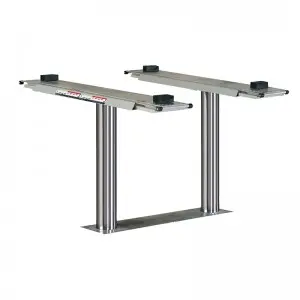
Unleashing the Power of the Cylinder: A Deep Dive into its Design and Applications
The cylinder is a seemingly simple geometric shape that finds itself playing a crucial role in various fields such as engineering, physics, and mathematics. With its straight sides, circular base, and top, the cylinder may appear basic at first glance, but its applications are anything but ordinary.

Unleashing the Power of the Cylinder: A Deep Dive into its Design and Applications
One of the key features of a cylinder is its ability to efficiently enclose volume. This property makes cylinders ideal for storing and transporting liquids and gases. In engineering, cylinders are commonly used in hydraulic systems where they convert fluid power into mechanical force. The pistons inside cylinders move in a linear motion, exerting pressure and producing work. This mechanism is widely utilized in heavy machinery, vehicles, and industrial equipment.
Beyond its mechanical applications, cylinders also have a significant presence in the architectural world. The cylindrical shape is often employed in the design of buildings and structures to create a sense of space and aesthetic appeal. From lighthouses to skyscrapers, the cylindrical form can be seen in iconic landmarks around the world. Its symmetrical shape and uniform structure lend themselves well to creating stability and balance in architectural design.
In mathematical contexts, the cylinder serves as a fundamental shape with unique properties. Its volume and surface area can be easily calculated using simple formulas, making it an essential element in geometry and calculus. The study of cylinders provides a foundation for understanding more complex shapes and geometric concepts. Mathematicians and scientists frequently use cylinders as a building block for more intricate calculations and proofs.
In addition to its practical applications, the cylinder has also inspired artists and designers in various creative endeavors. Its elegant shape and versatile nature make it a popular choice for creating sculptures, installations, and other works of art. Artists often explore the cylinder’s form and proportions to evoke different emotions and meanings in their creations. From minimalist installations to intricate sculptures, the cylinder offers endless possibilities for artistic expression.

Unleashing the Power of the Cylinder: A Deep Dive into its Design and Applications
As technology continues to advance, the cylinder remains a timeless shape that continues to evolve and adapt to new innovations. With the rise of 3D printing and additive manufacturing, cylinders can now be produced in a wide range of materials and sizes with unprecedented precision. This opens up new opportunities for designers, engineers, and artists to explore the potential of the cylinder in ways previously unimagined.
In conclusion, the cylinder may appear simple on the surface, but its impact and significance across various fields are undeniable. From powering machinery to inspiring art, the cylinder’s versatility and efficiency make it a truly remarkable shape with endless possibilities. As we continue to push the boundaries of science, technology, and creativity, the cylinder will undoubtedly remain a key player in shaping the world around us.car quick lift
